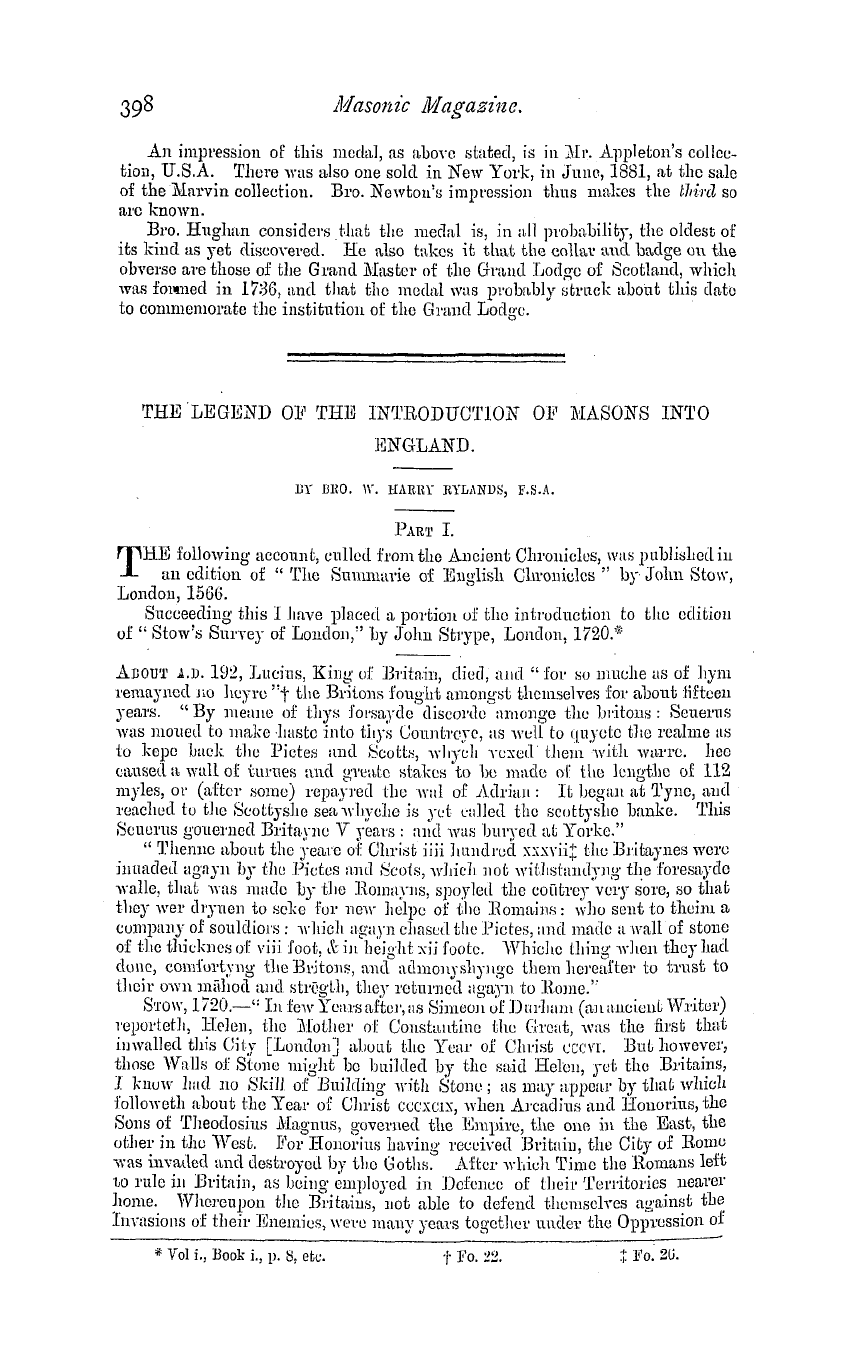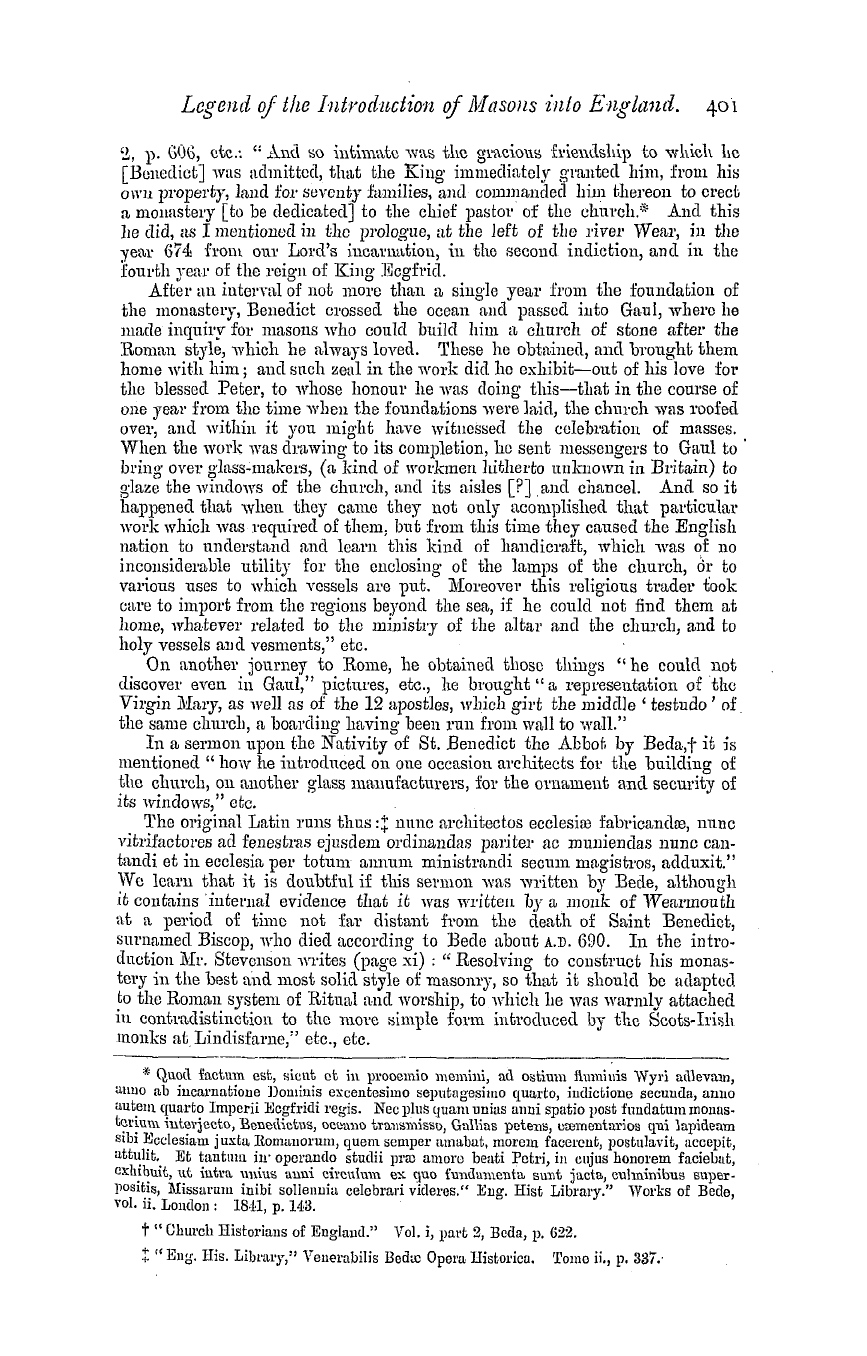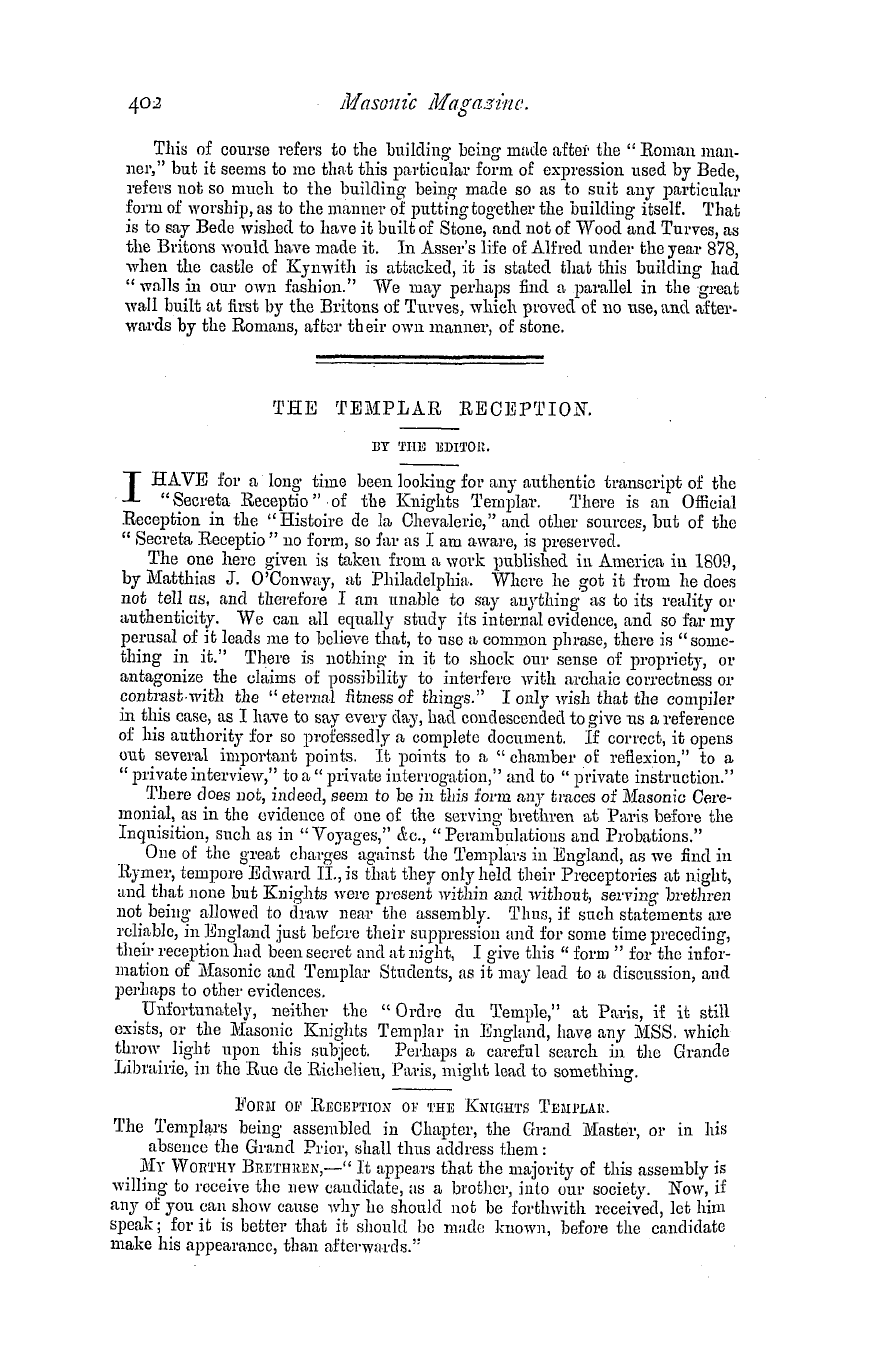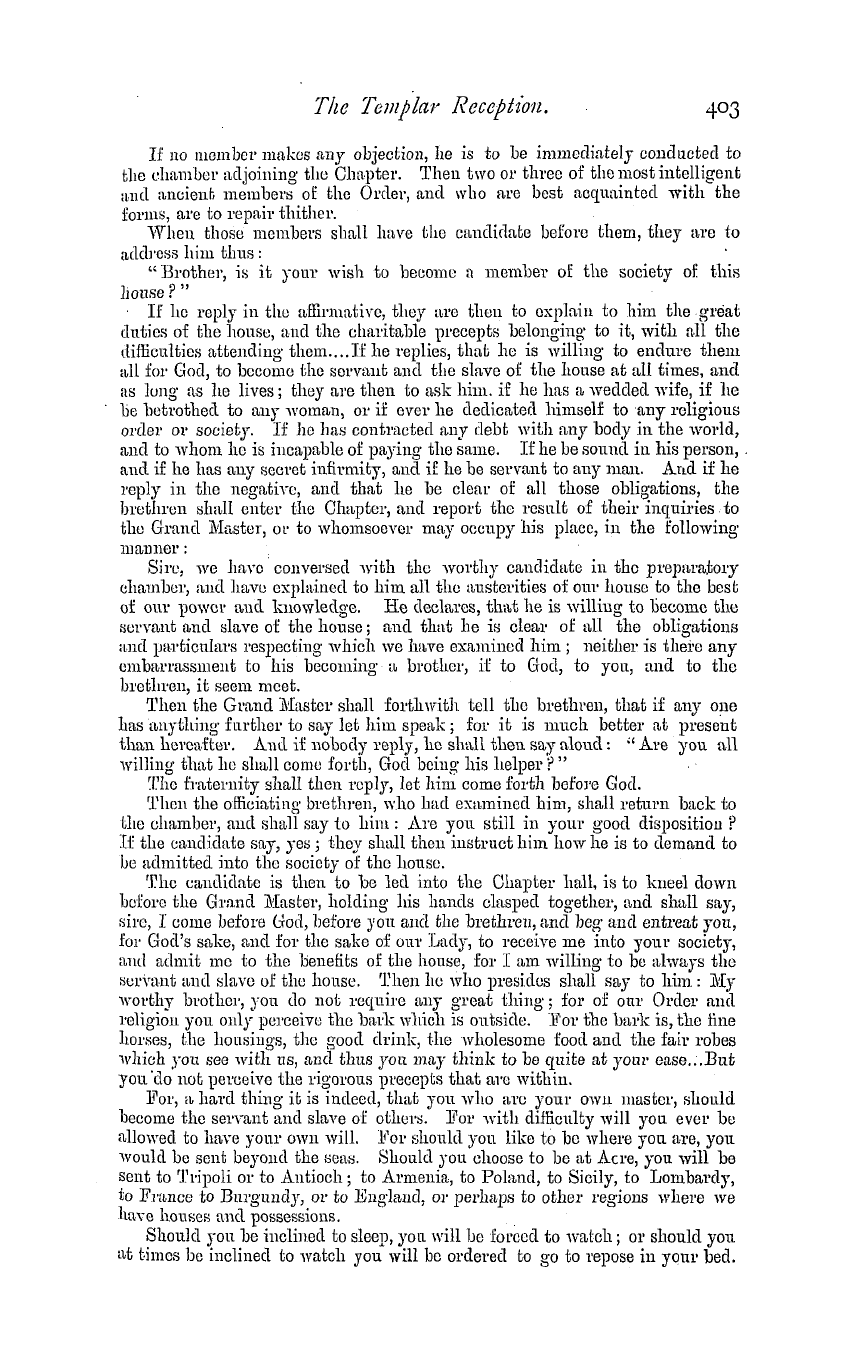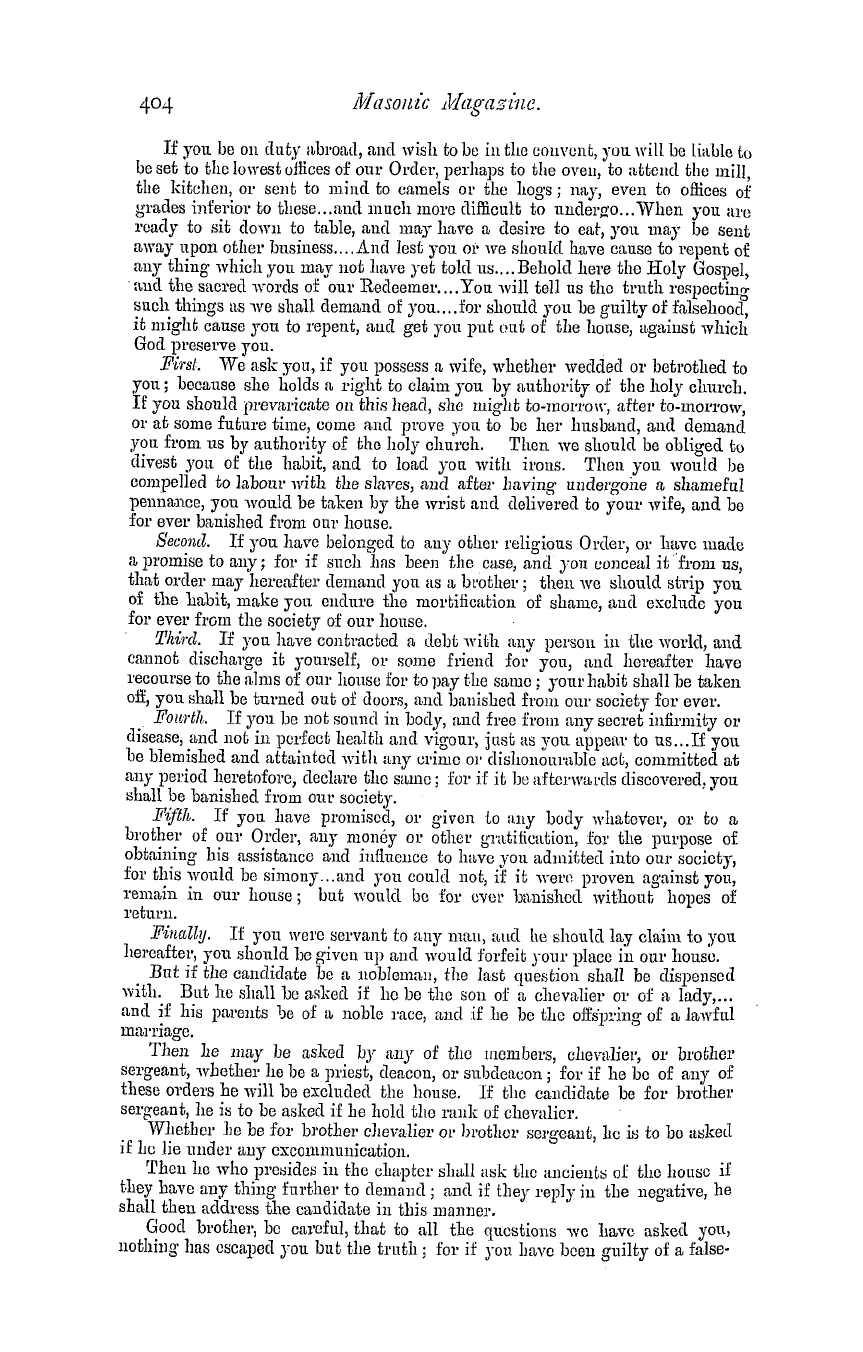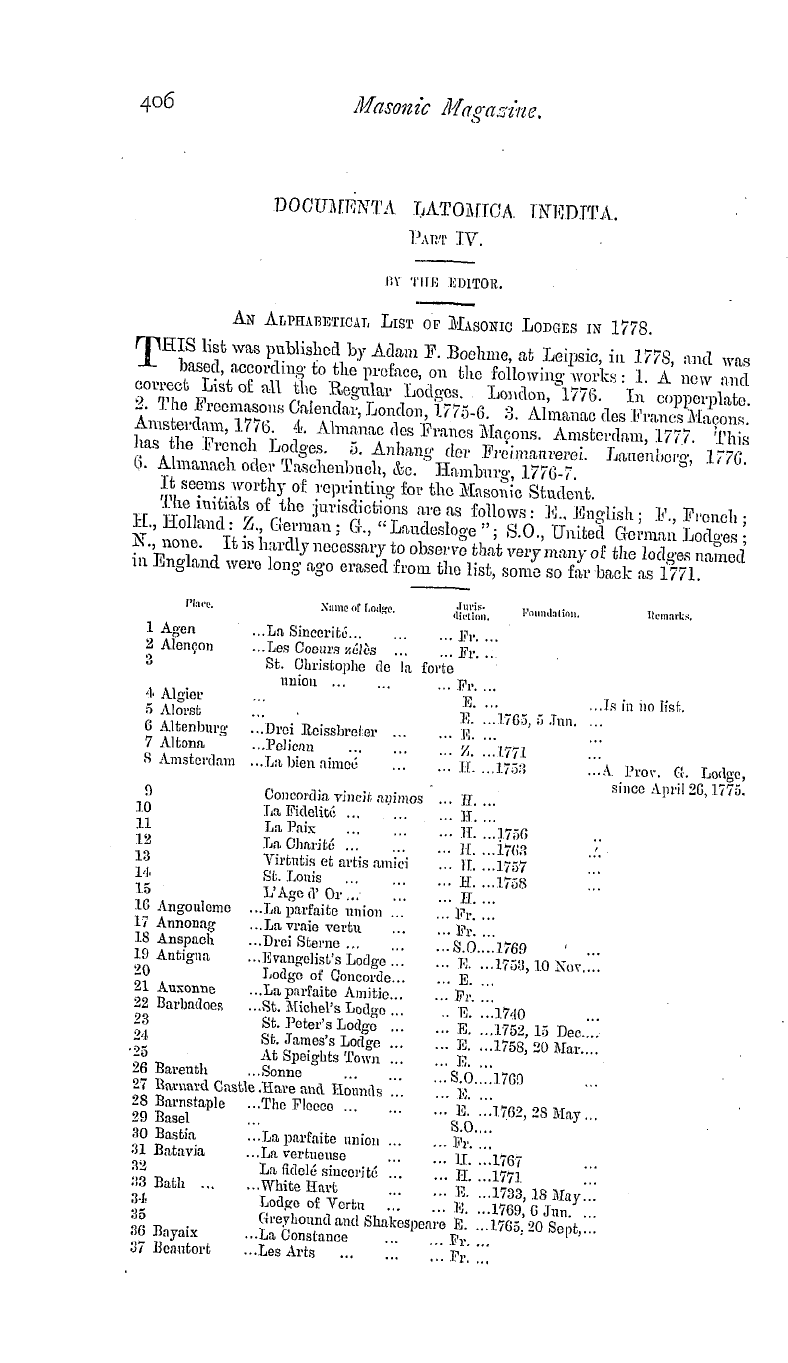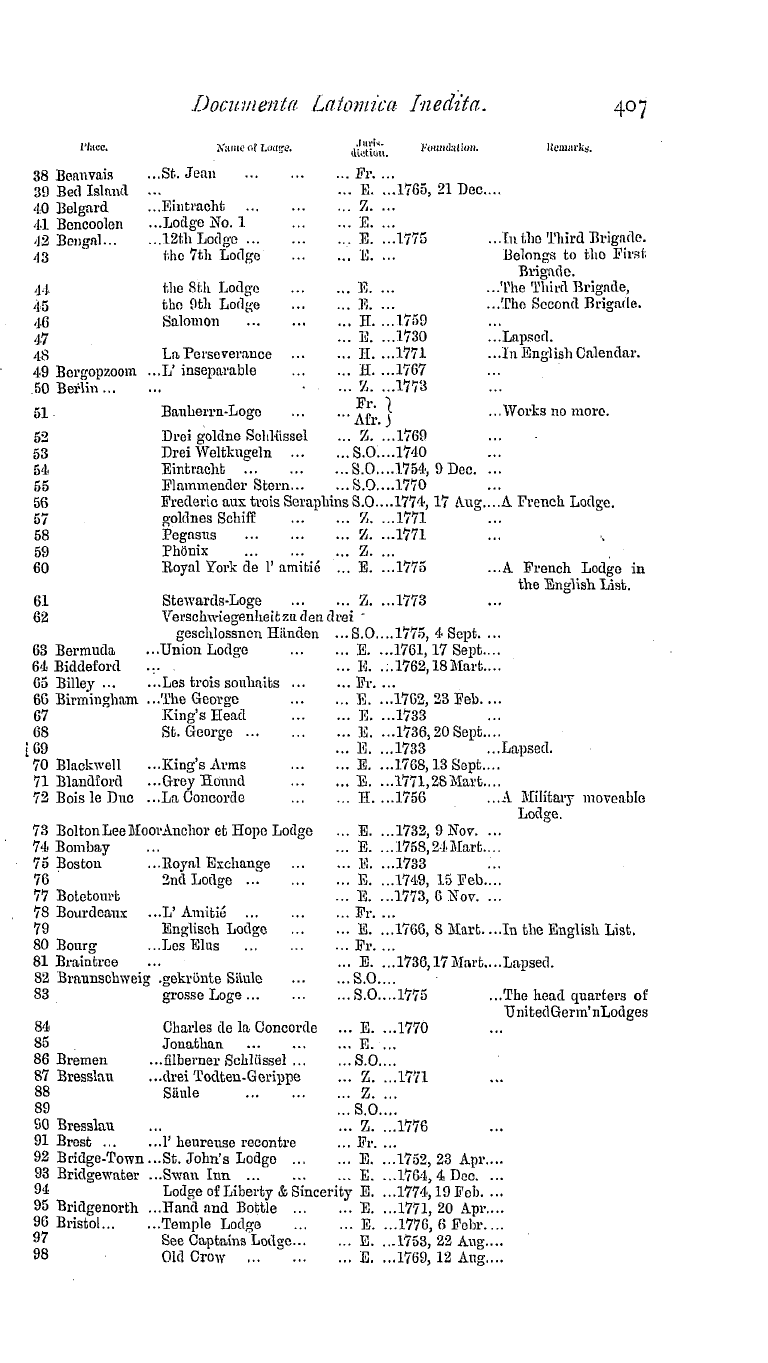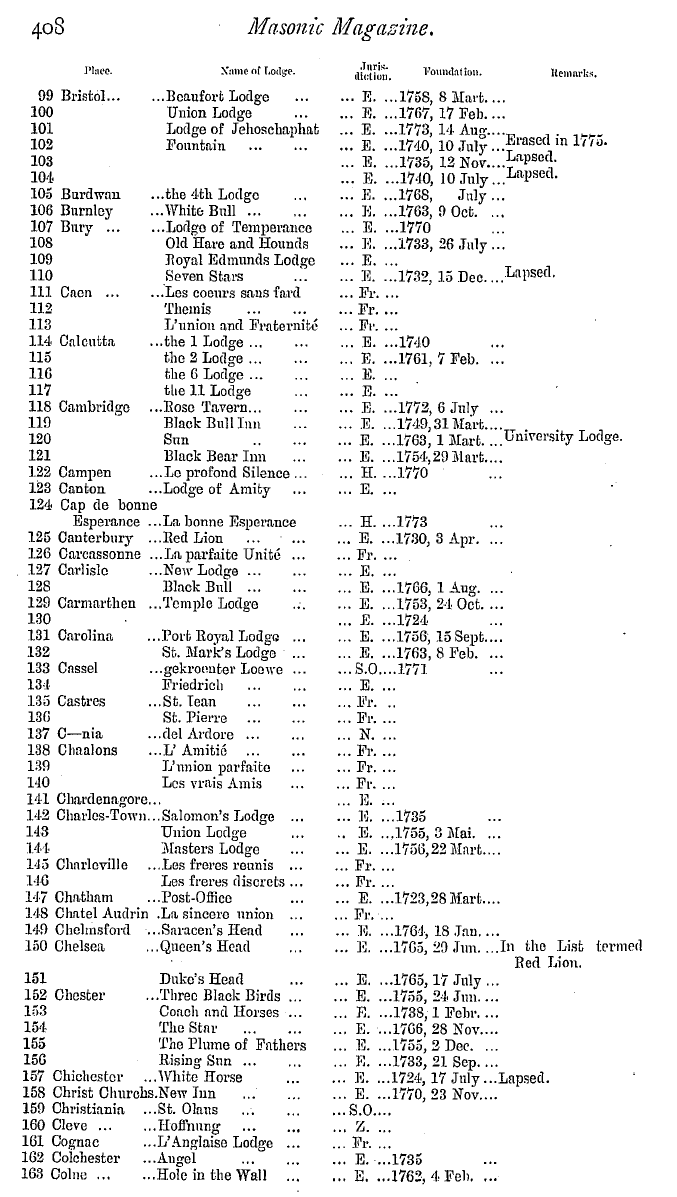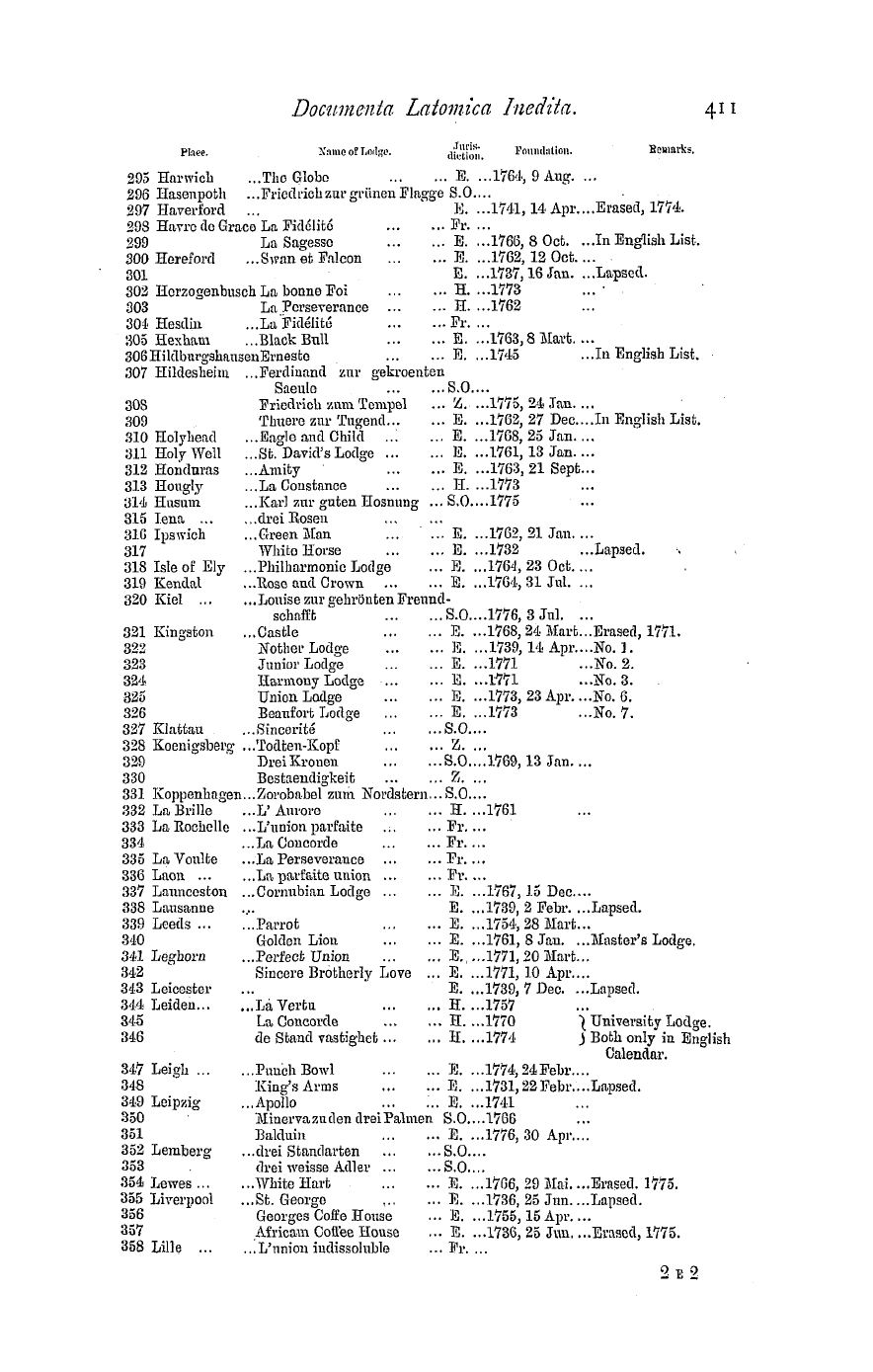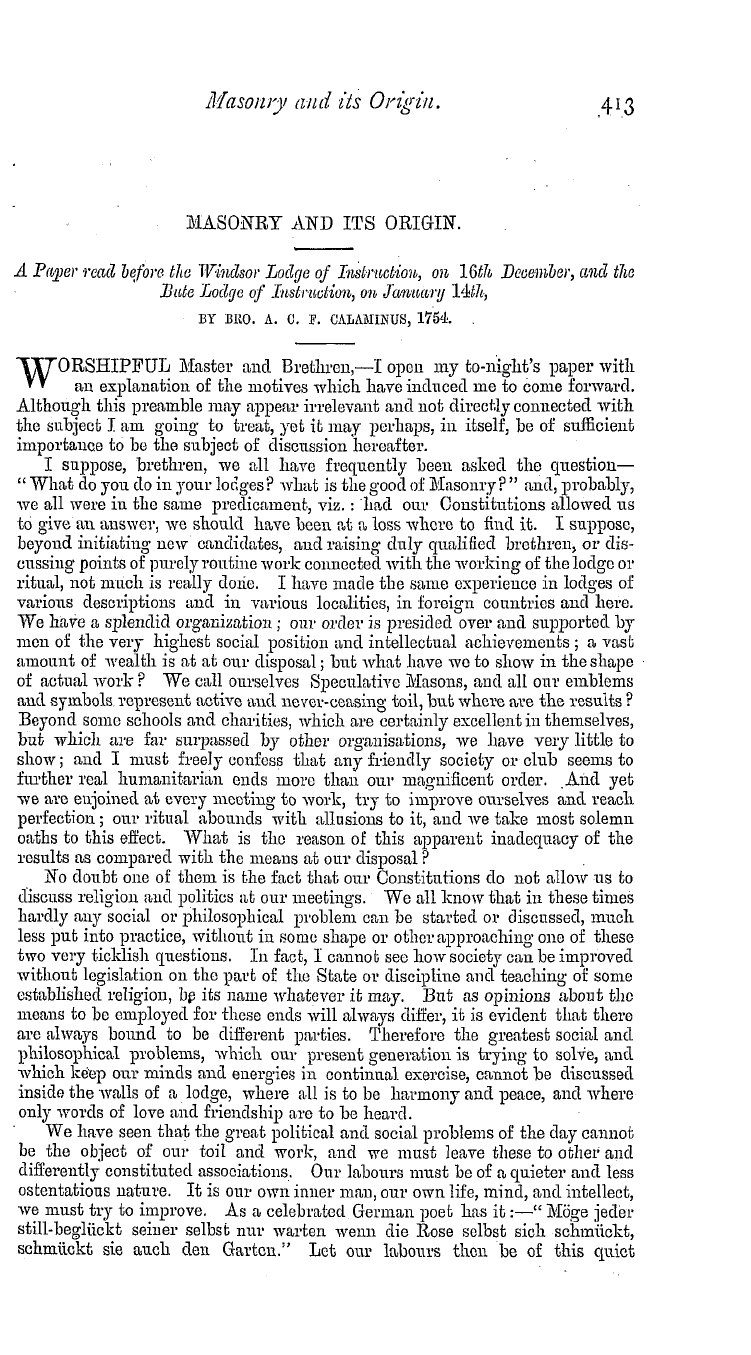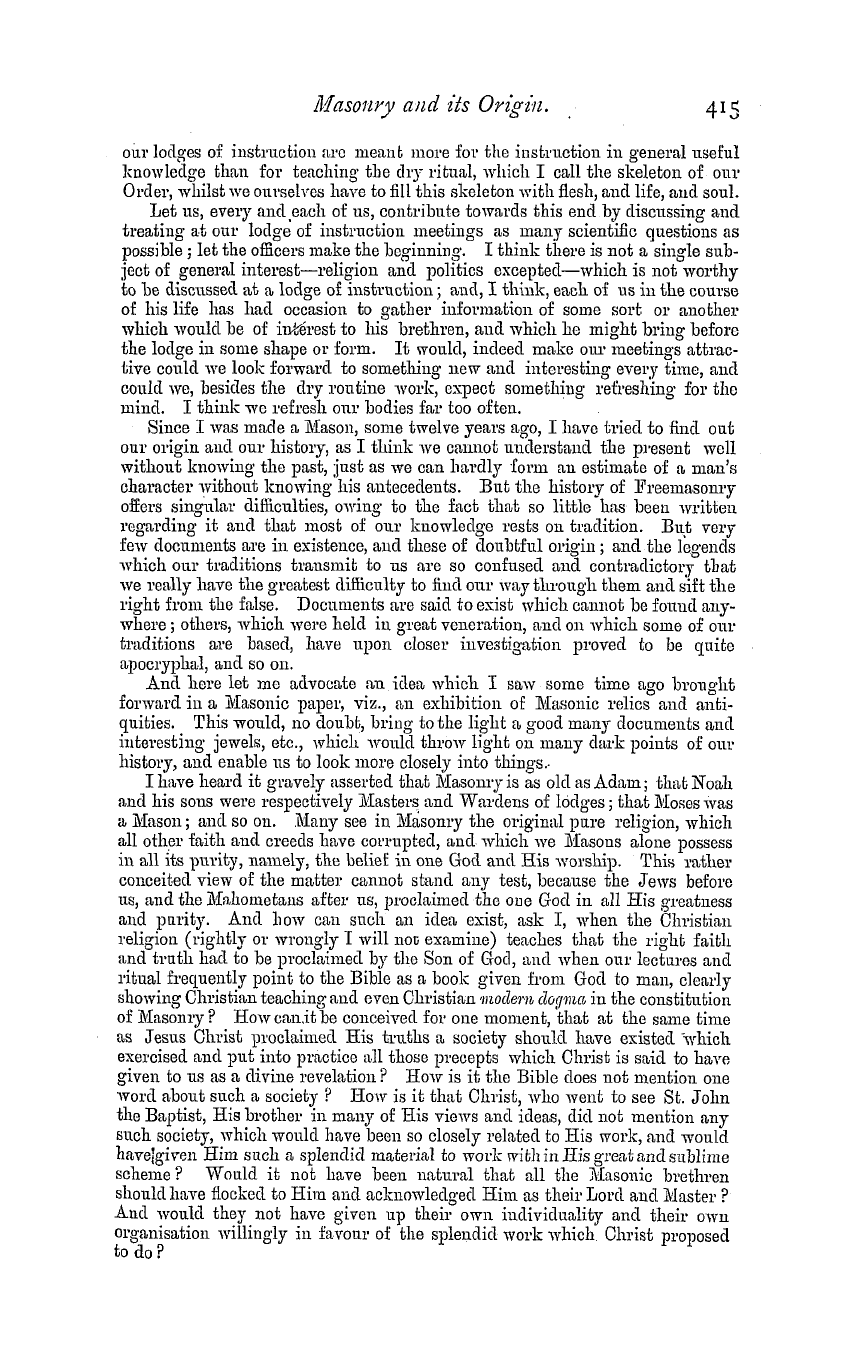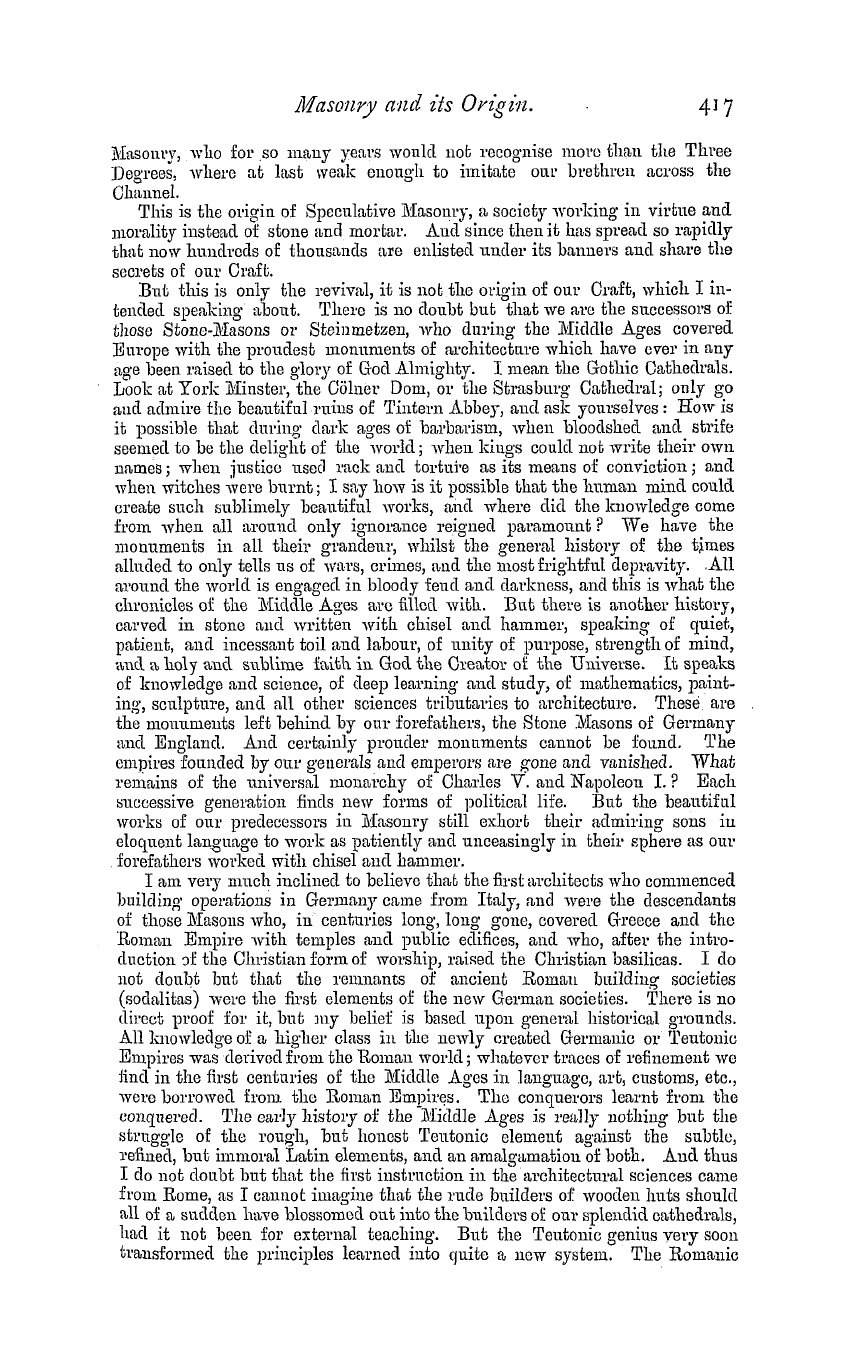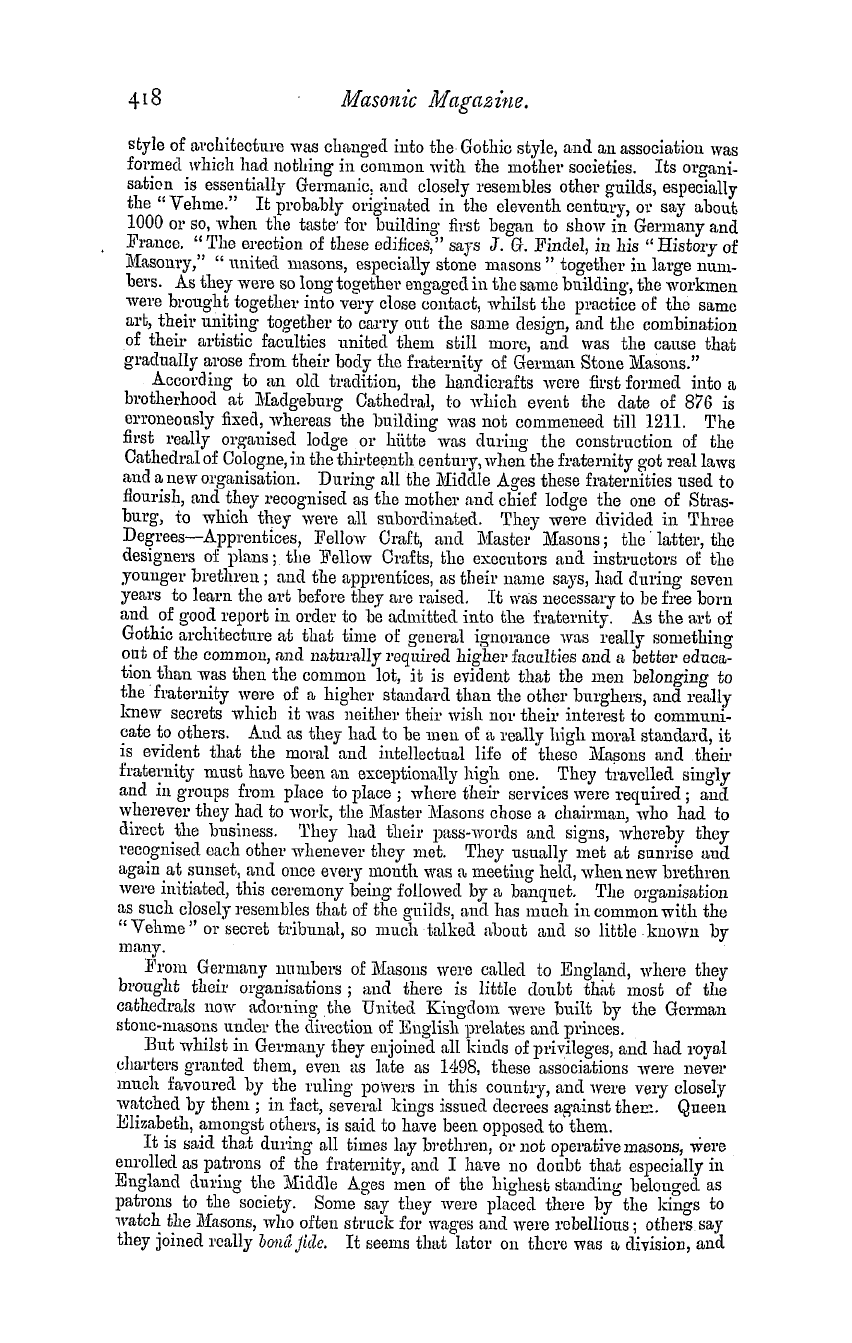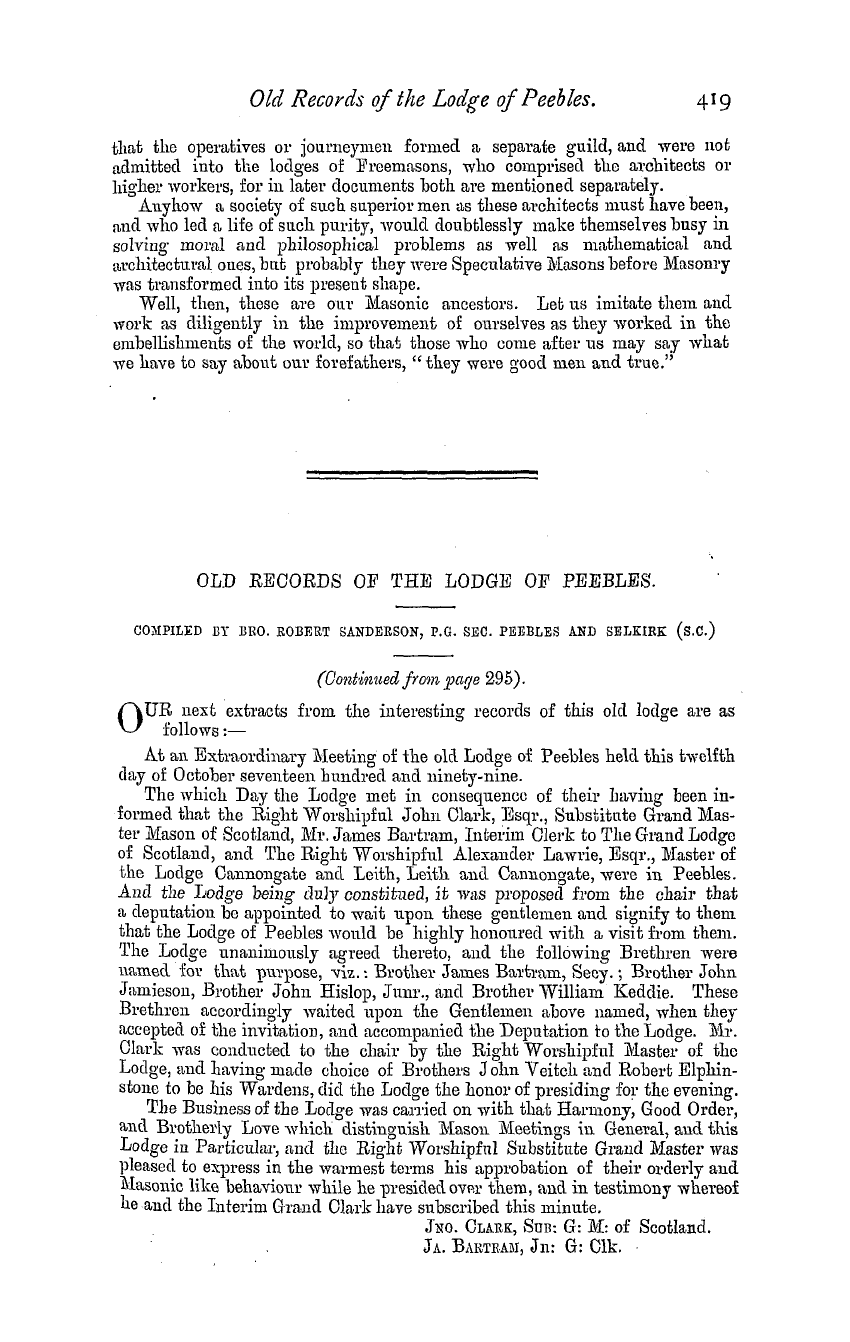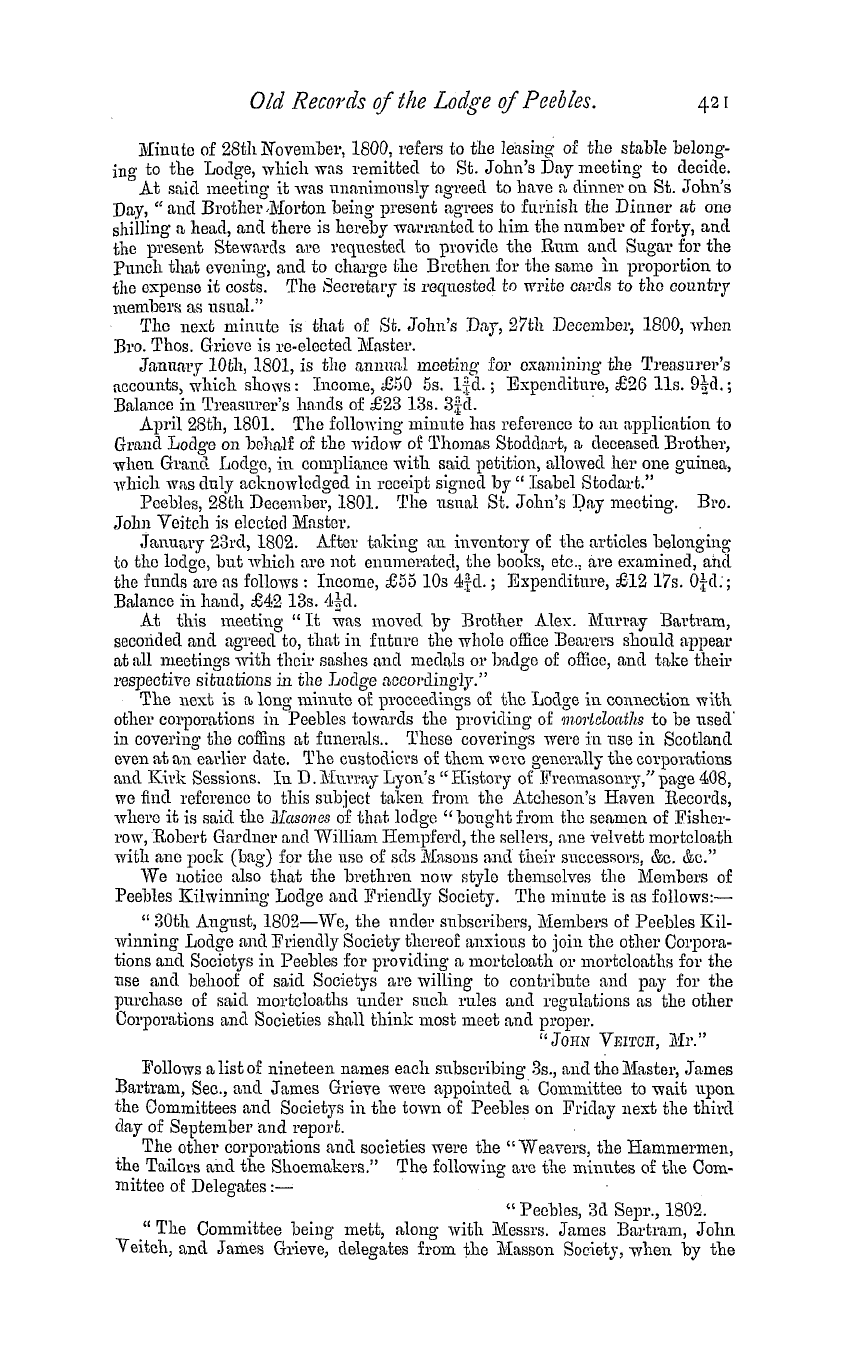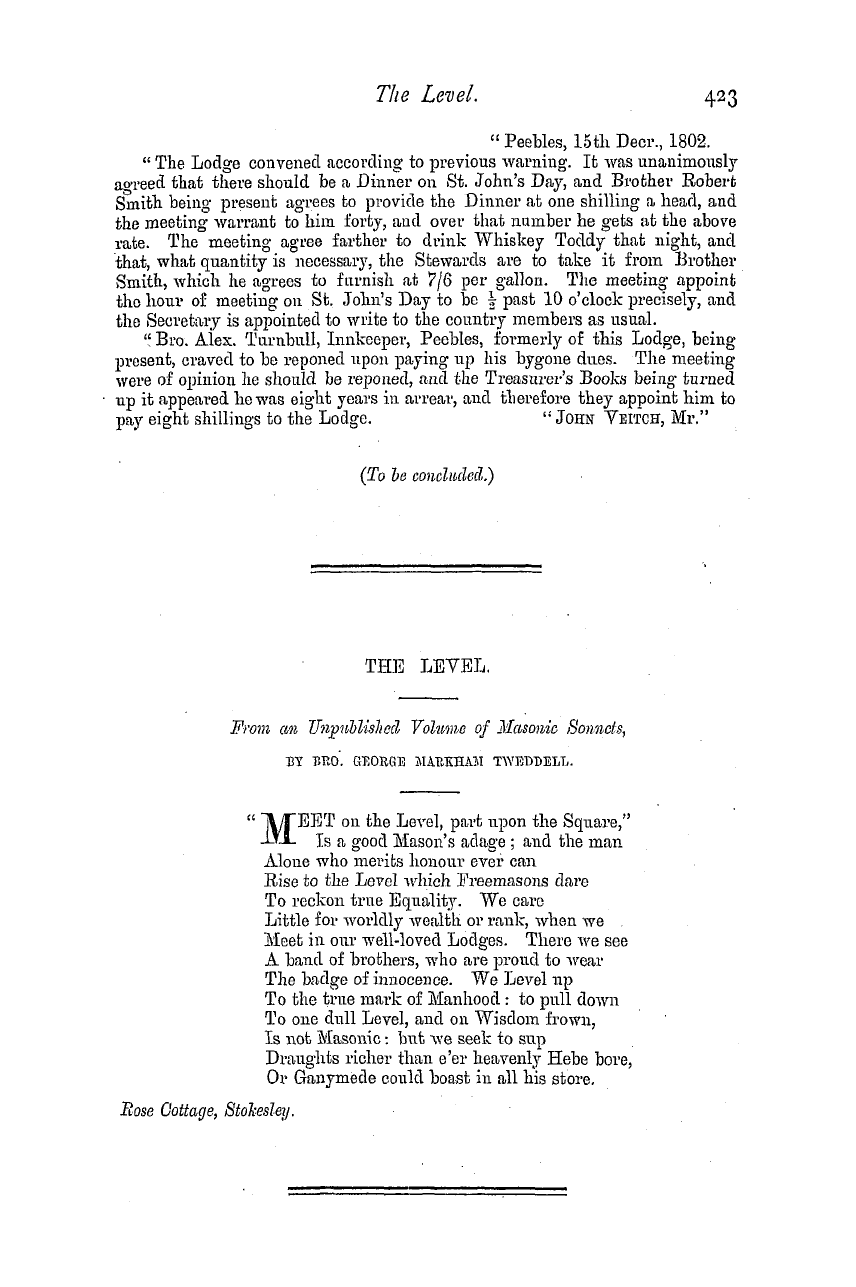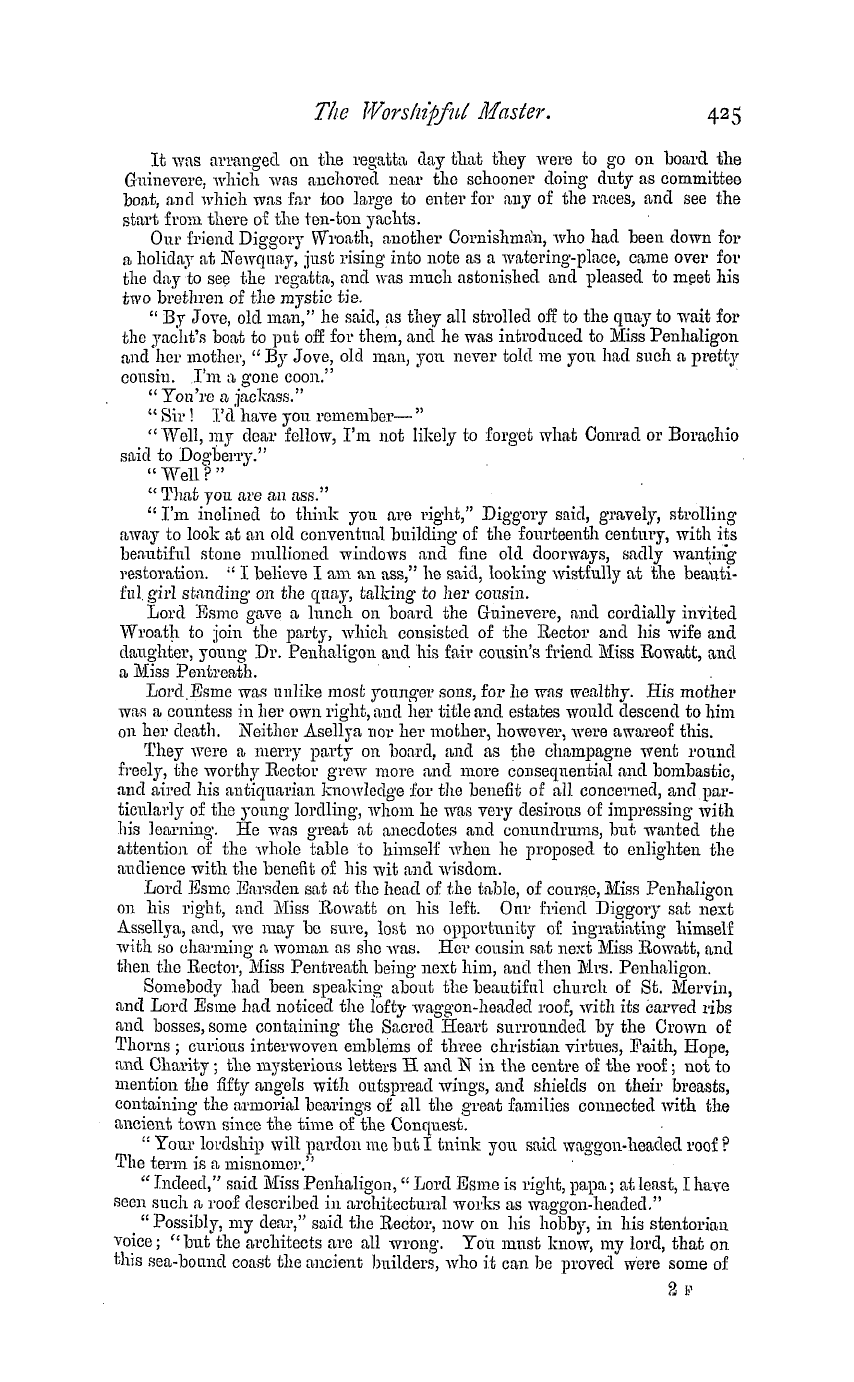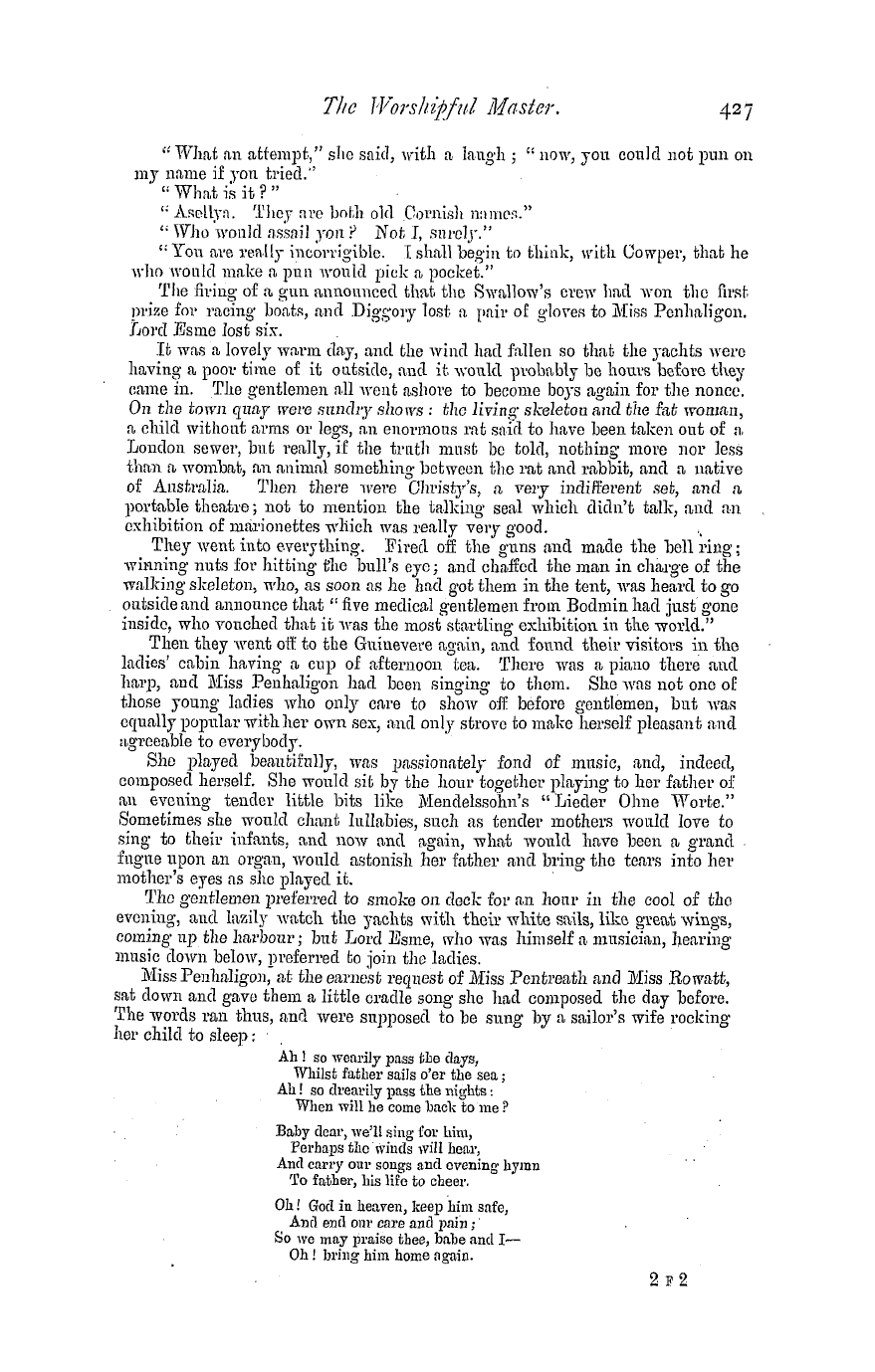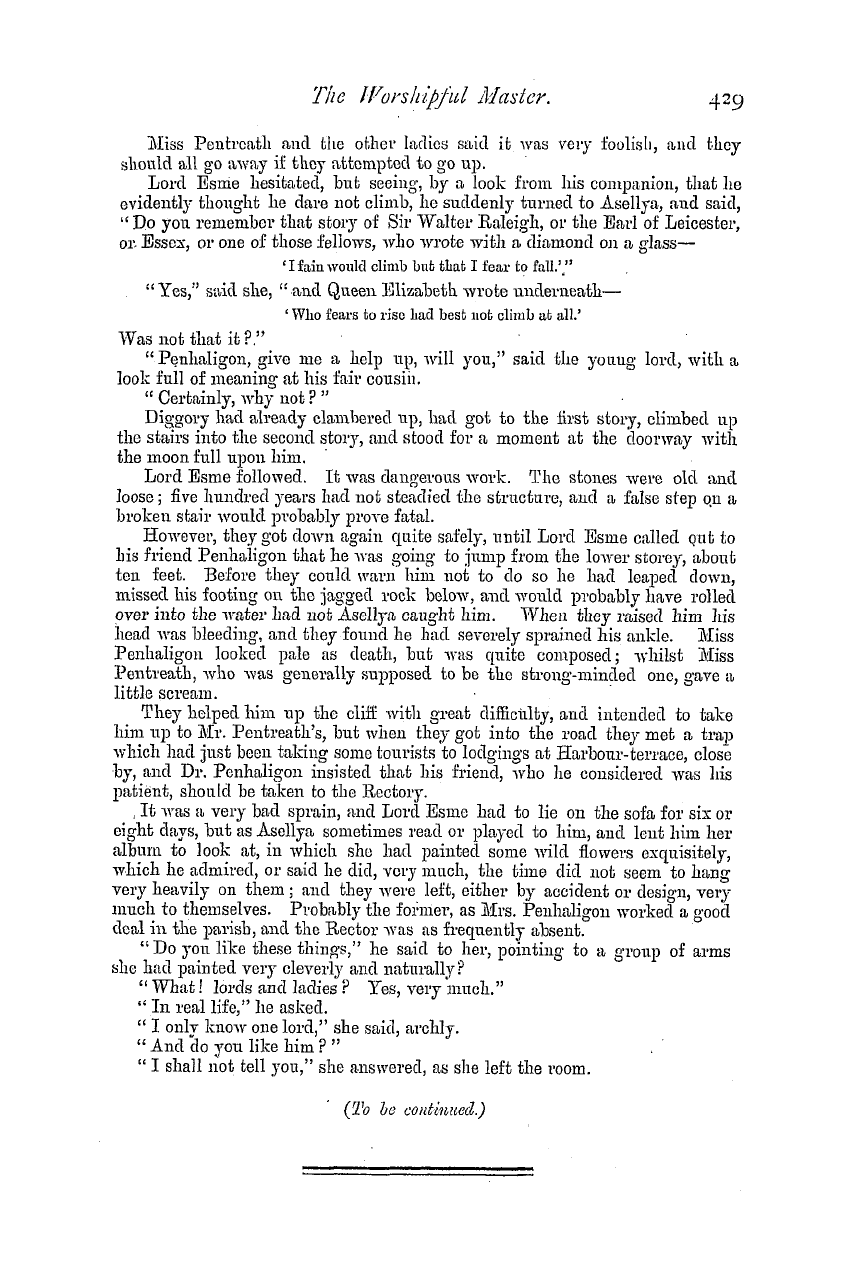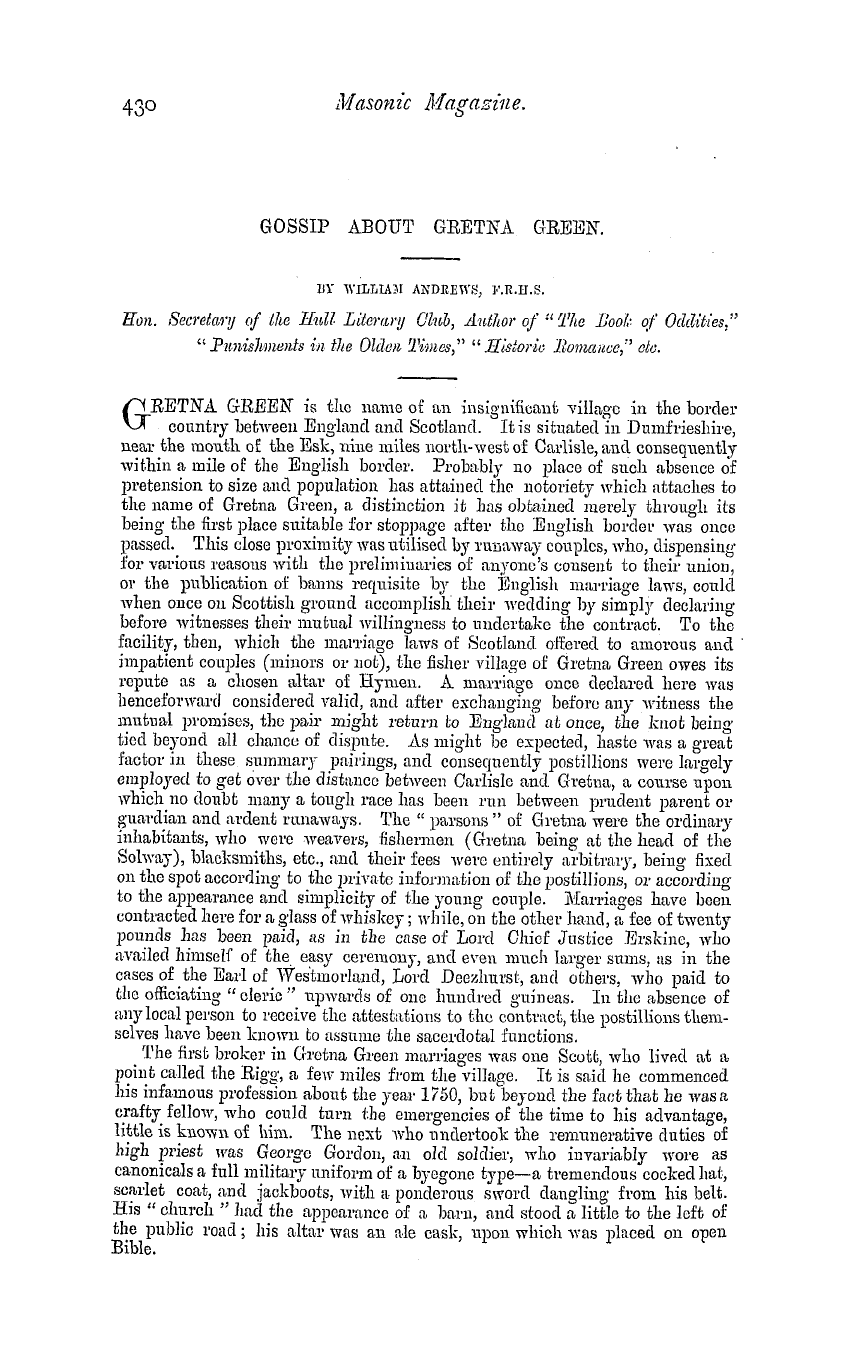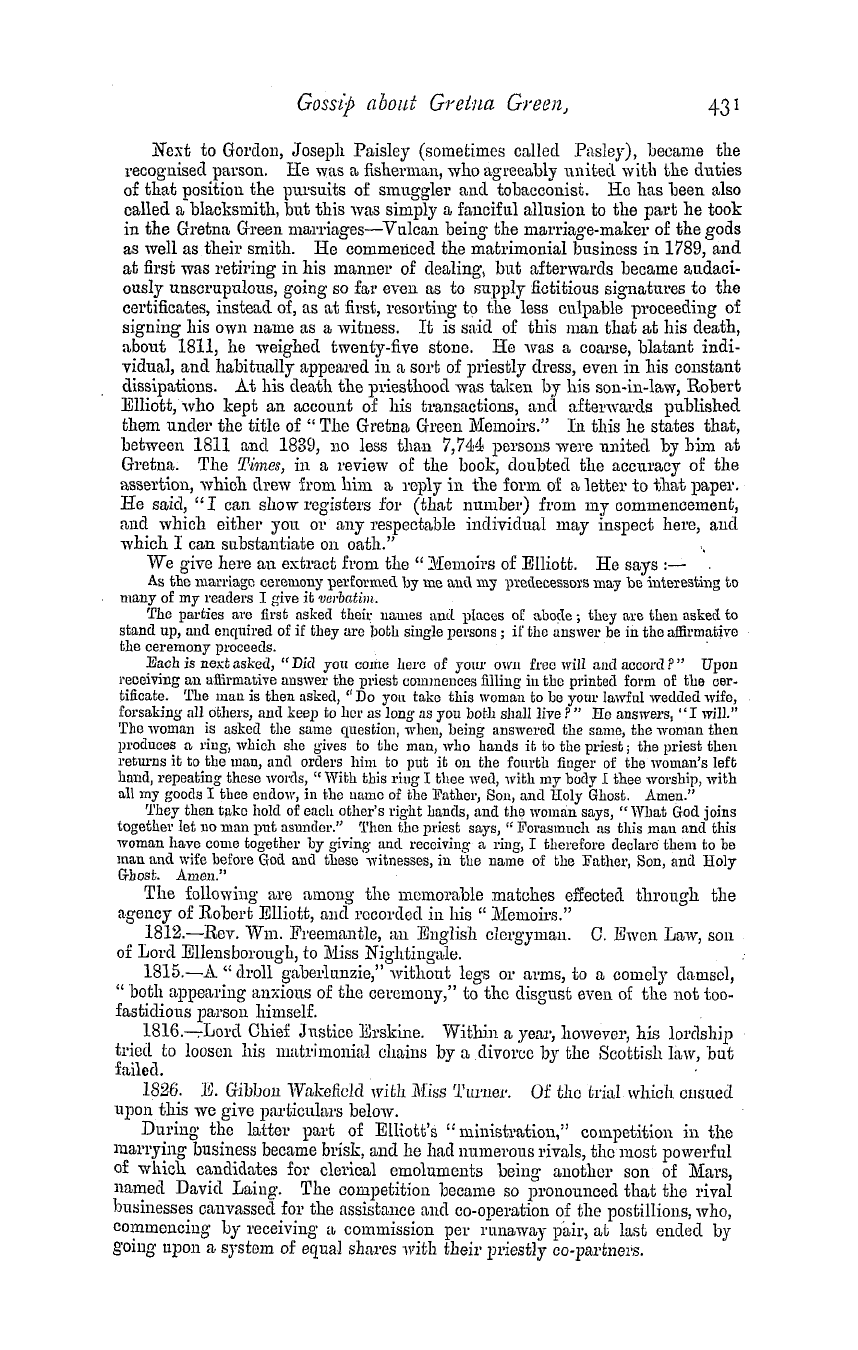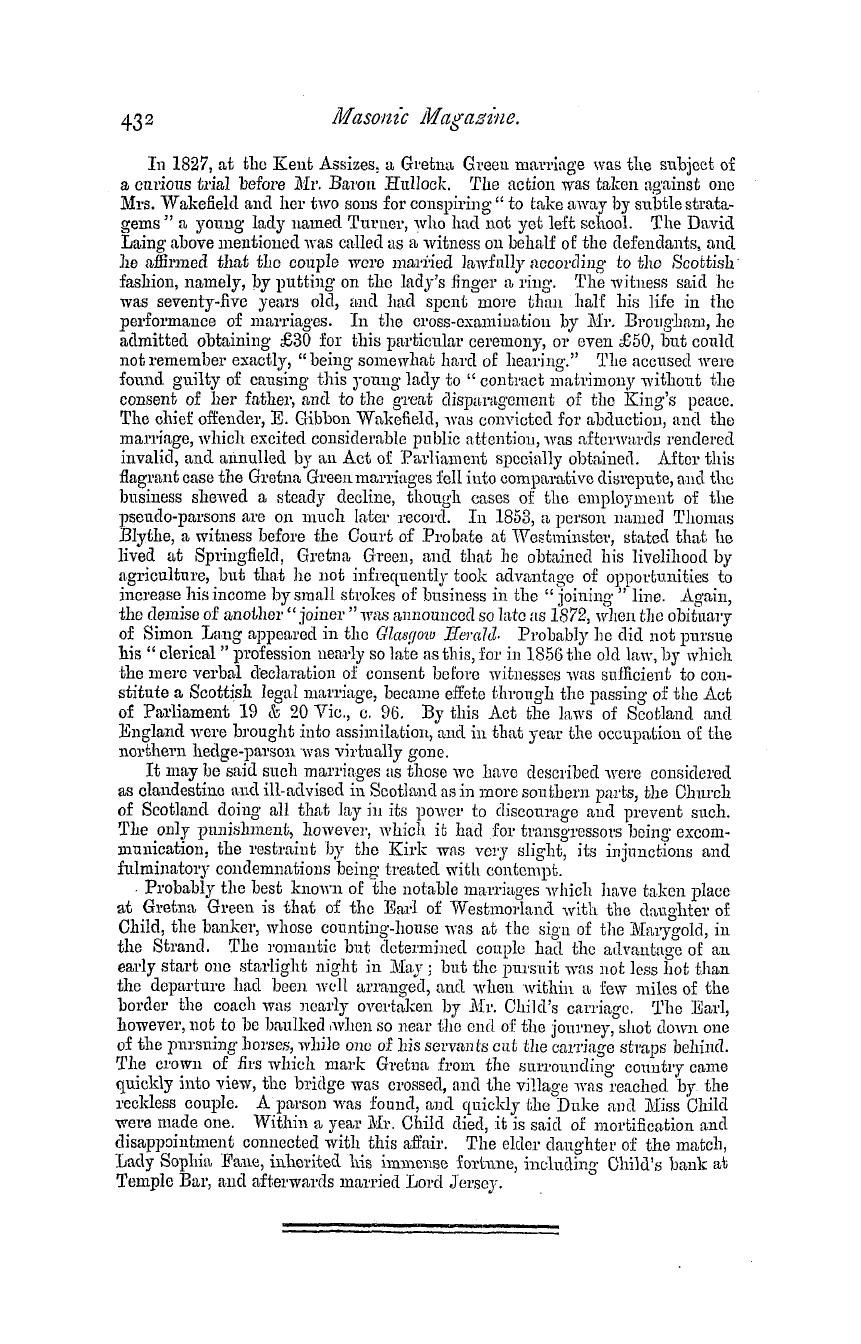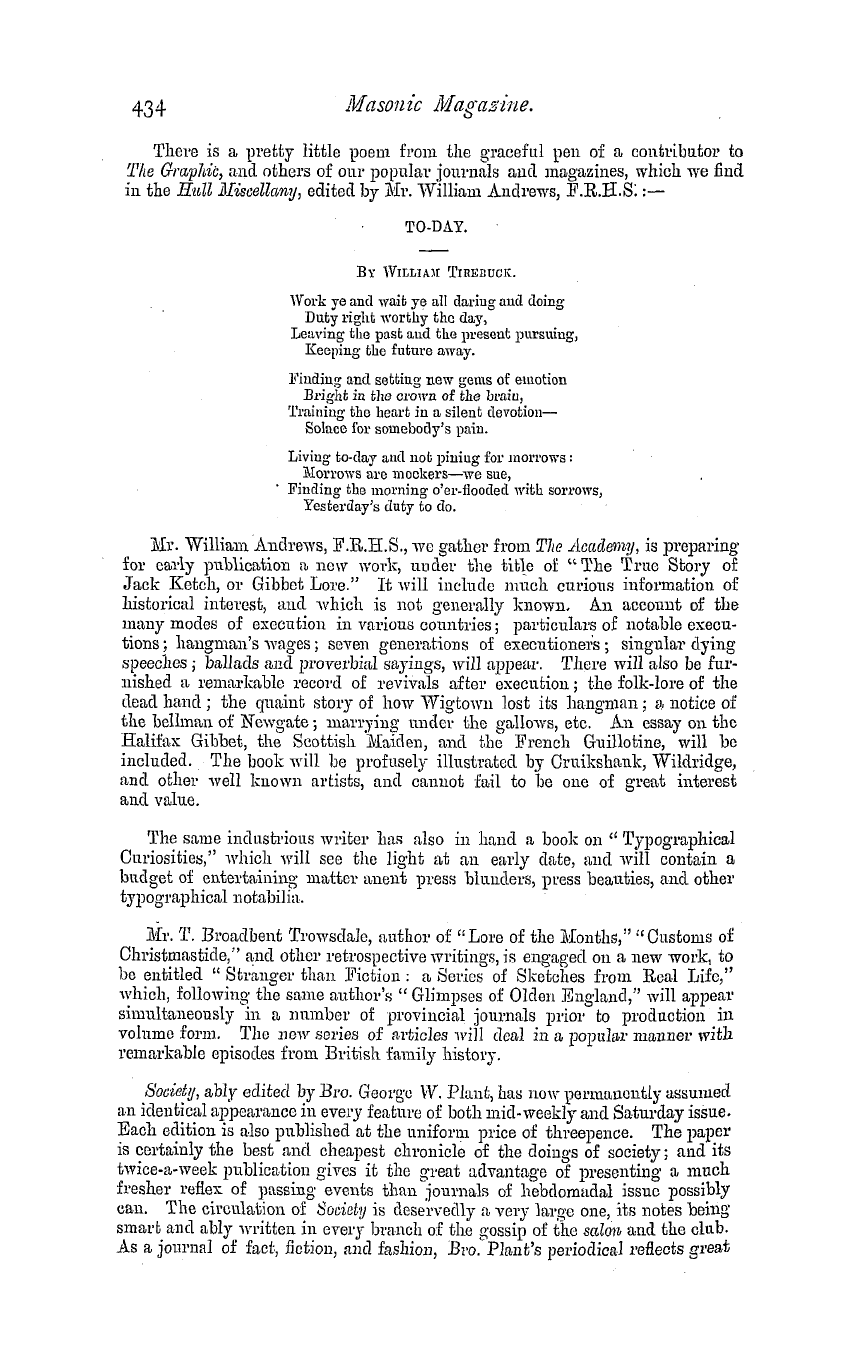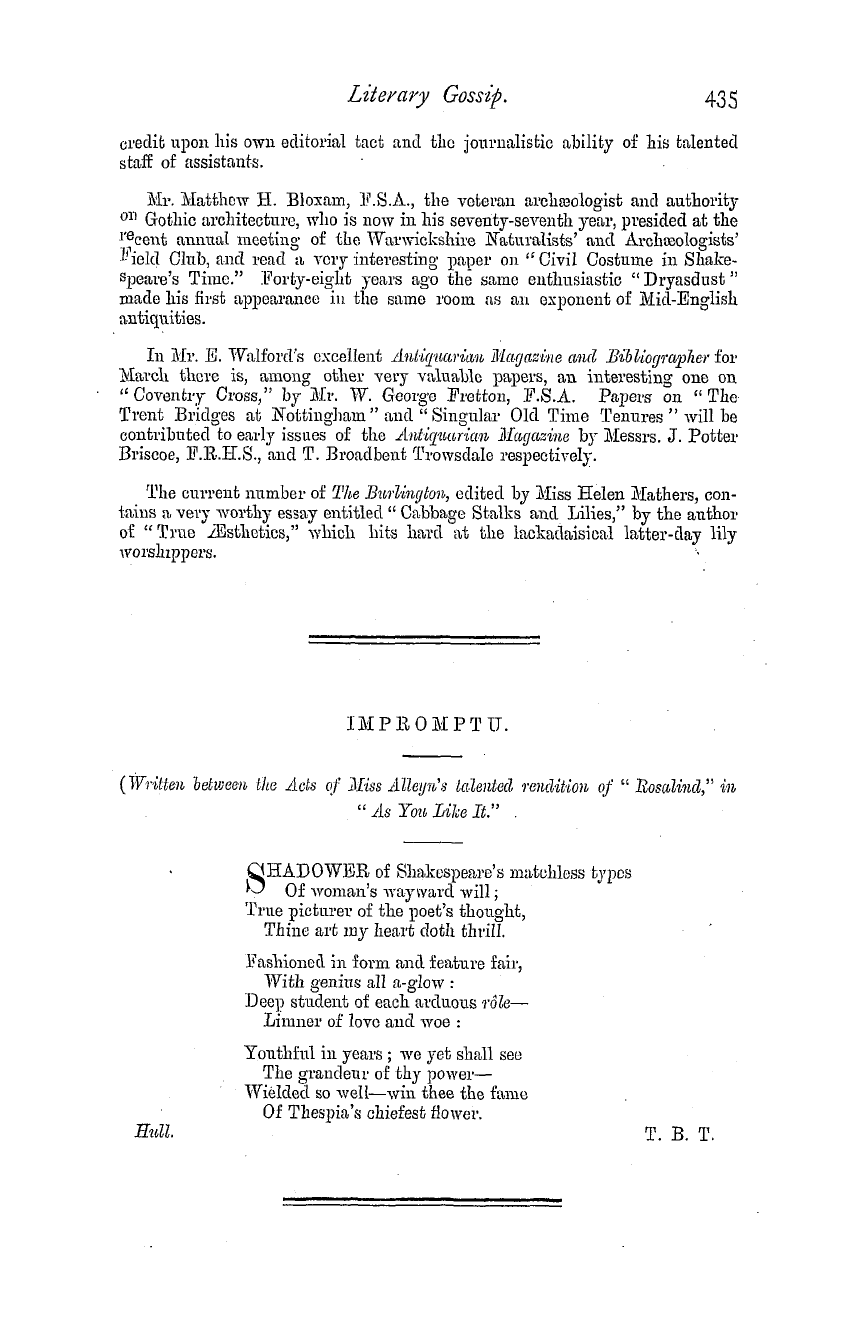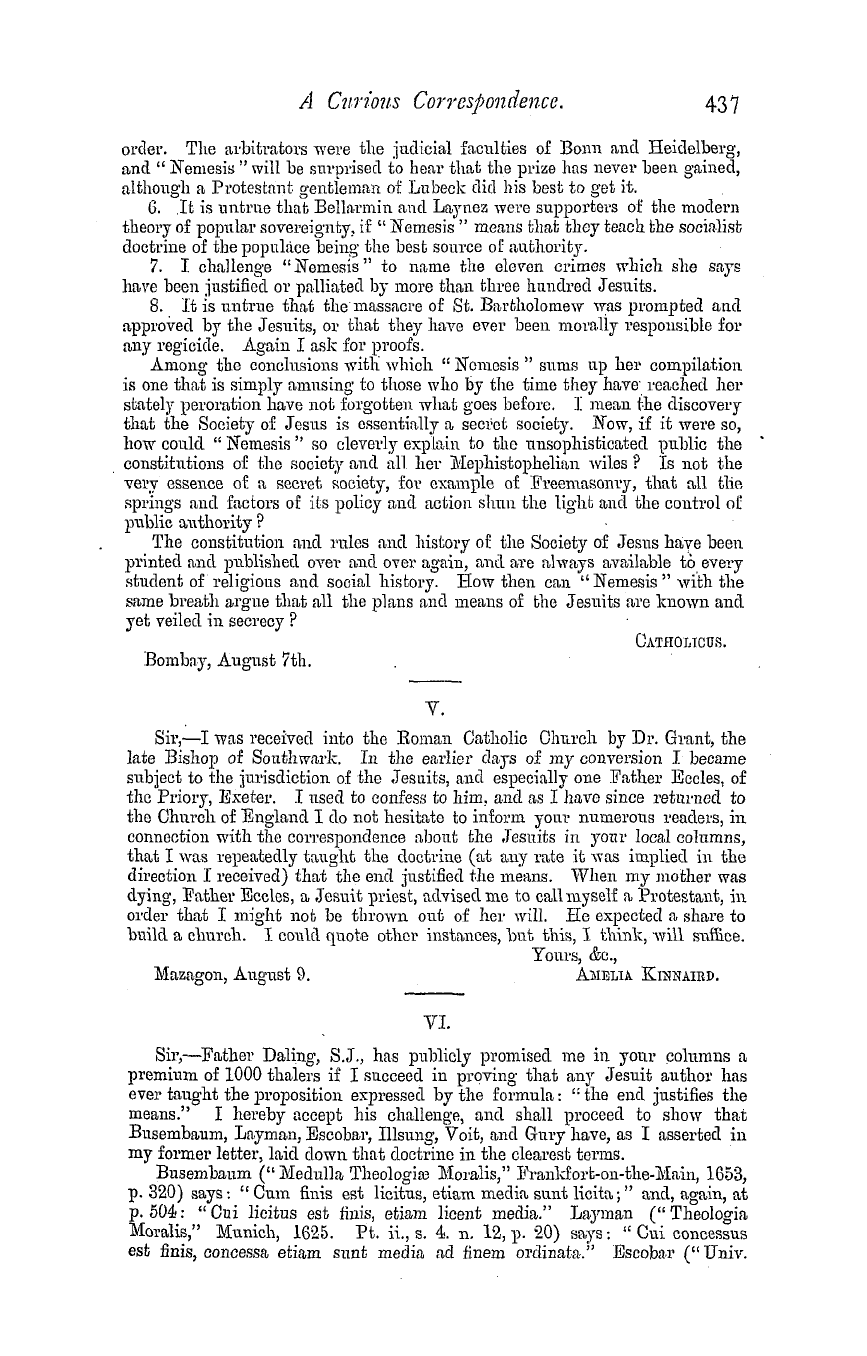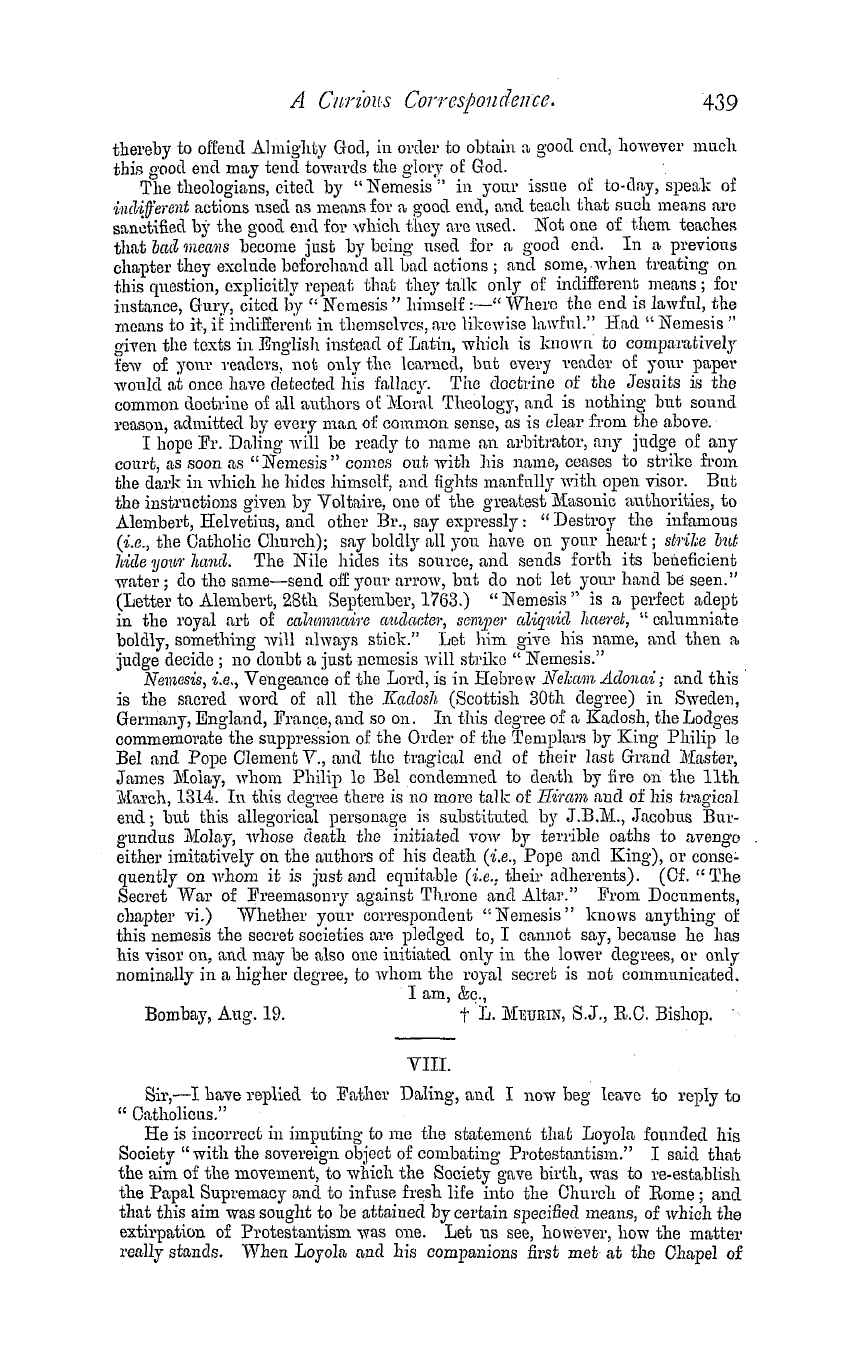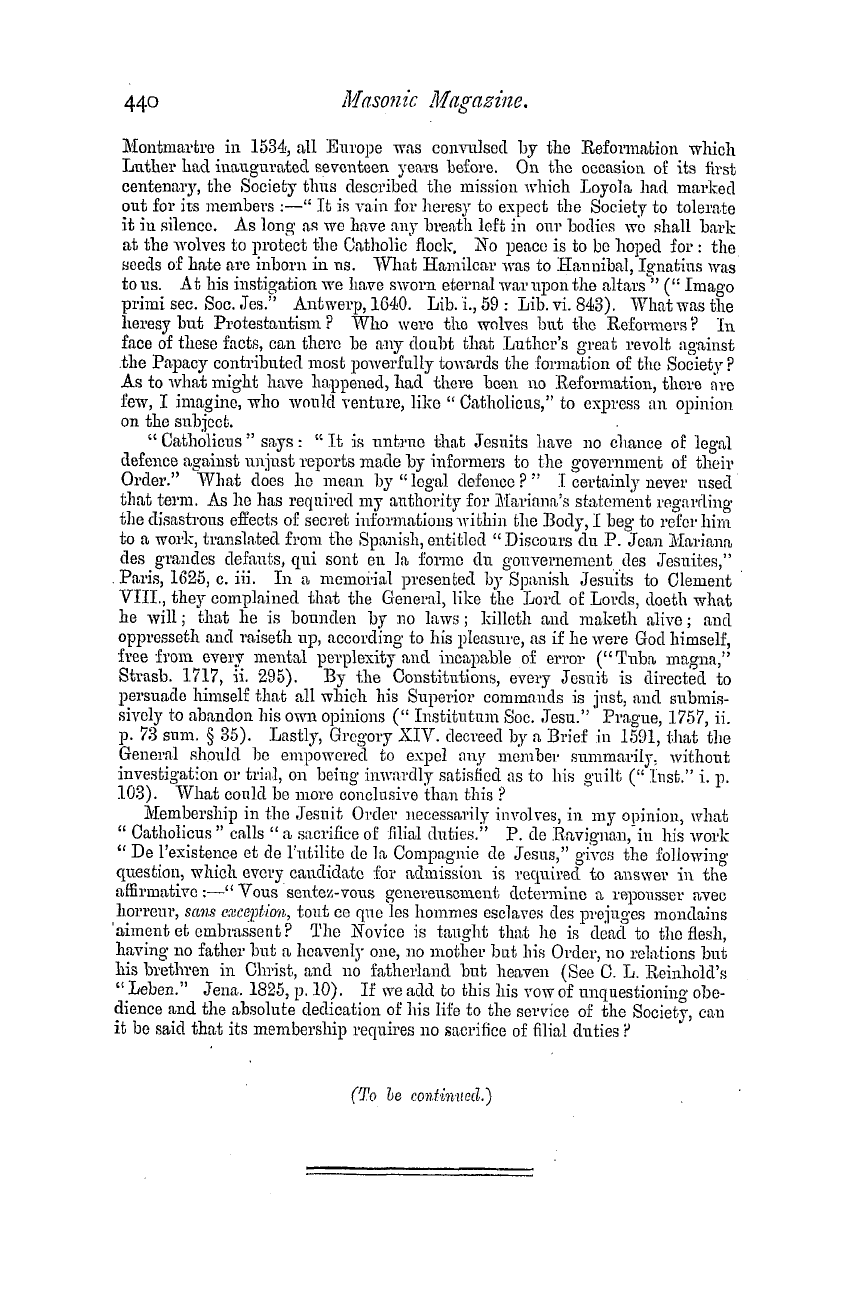Note: This text has been automatically extracted via Optical Character Recognition (OCR) software.
The Legend Of The Introduction Of Masons Into England.
1 , p . 606 , etc .: " And so intimate was the grachms friendship to -which lie [ Benedict ] was admitted , that the King immediately granted him , from his own - property , land for seventy families , and commanded him thereon to erect a monastery [ to be dedicated ] to the chief pastor of the church . * And this lie did , as I mentioned in the prologue , at the left of the river Wear , in the year 674 from our Lord ' s incarnation , in the second indiction , and in the
fourth year of the reign of King Ecgfrid . After an interval of not more than a single year from the foundation of the monastery , Benedict crossed the ocean and passed into Gaul , where he made inquiry for masons who could build him a church of stone after the Roman style , which he always loved . These he obtained , and brought them home with him ; and such zeal in the work did he exhibit—out of his love for
the blessed Peter , to whose honour he was doing this—that in the course of one year from the time when the foundations were laid , the church was roofed over , and within it you might have witnessed the celebration of masses . When the work was drawing to its completion , he sent messengers to Gaul to bring over glass-makers , ( a kind of workmen hitherto unknown in Britain ) to glaze the windows of the churchand its aisles [?] and chancel . And so it
, happened that when they came they not only acomplished that particular work which was required of them , but from this time they caused the English nation to understand and learn this kind of handicraft , which was of no inconsiderable utility for the enclosing of the lamps of the church , or to various uses to which vessels are put . Moreover this religious trader "took care to import from the regions beyond the seaif he could not find them at
, home , whatever related to the ministry of the altar and the church , and to holy vessels and vesments , " etc . On another journey to Rome , he obtained those things " he could not discover even in Gaul , " pictures , etc ., he brought" a representation of the Virgin Mary , as well as of the 12 apostles , which girt the middle ' testudo ' of the same church , a boarding having been run from wall to wall . "
In a sermon upon the Nativity of St . Benedict the Abbot b y Beda , f it is mentioned " how he introduced on one occasion architects for the building of the church , on another glass manufacturers , for the ornament and security of its windows , " etc . The original Latin runs thus : J nunc architectos ecclesia ? fabricandas , nunc vitrifactores ad fenestras ejusdem ordinandas pariter ac muniendas nunc cantandi et in ecclesia per totum annum ministrandi secum magistros , adduxit . "
We learn that it is doubtful if this sermon was written by Bede , although it contains internal evidence that it was written by a monk of Wearinouth at a period of time not far distant from the death of Saint Benedict , surnamed Biscop , who died according to Bede about A . D . 690 . In the introduction Mr . Stevenson writes ( page xi ) : " Resolving to construct his monastery in the best and most solid st yle of masonry , so that it should be adapted to the Roman system of Ritual and worship , to which he was warmly attached iu contradistinction to the more simple form introduced b y the Scots-Irish monks at Lindisfarne , " etc ., etc .
Note: This text has been automatically extracted via Optical Character Recognition (OCR) software.
The Legend Of The Introduction Of Masons Into England.
1 , p . 606 , etc .: " And so intimate was the grachms friendship to -which lie [ Benedict ] was admitted , that the King immediately granted him , from his own - property , land for seventy families , and commanded him thereon to erect a monastery [ to be dedicated ] to the chief pastor of the church . * And this lie did , as I mentioned in the prologue , at the left of the river Wear , in the year 674 from our Lord ' s incarnation , in the second indiction , and in the
fourth year of the reign of King Ecgfrid . After an interval of not more than a single year from the foundation of the monastery , Benedict crossed the ocean and passed into Gaul , where he made inquiry for masons who could build him a church of stone after the Roman style , which he always loved . These he obtained , and brought them home with him ; and such zeal in the work did he exhibit—out of his love for
the blessed Peter , to whose honour he was doing this—that in the course of one year from the time when the foundations were laid , the church was roofed over , and within it you might have witnessed the celebration of masses . When the work was drawing to its completion , he sent messengers to Gaul to bring over glass-makers , ( a kind of workmen hitherto unknown in Britain ) to glaze the windows of the churchand its aisles [?] and chancel . And so it
, happened that when they came they not only acomplished that particular work which was required of them , but from this time they caused the English nation to understand and learn this kind of handicraft , which was of no inconsiderable utility for the enclosing of the lamps of the church , or to various uses to which vessels are put . Moreover this religious trader "took care to import from the regions beyond the seaif he could not find them at
, home , whatever related to the ministry of the altar and the church , and to holy vessels and vesments , " etc . On another journey to Rome , he obtained those things " he could not discover even in Gaul , " pictures , etc ., he brought" a representation of the Virgin Mary , as well as of the 12 apostles , which girt the middle ' testudo ' of the same church , a boarding having been run from wall to wall . "
In a sermon upon the Nativity of St . Benedict the Abbot b y Beda , f it is mentioned " how he introduced on one occasion architects for the building of the church , on another glass manufacturers , for the ornament and security of its windows , " etc . The original Latin runs thus : J nunc architectos ecclesia ? fabricandas , nunc vitrifactores ad fenestras ejusdem ordinandas pariter ac muniendas nunc cantandi et in ecclesia per totum annum ministrandi secum magistros , adduxit . "
We learn that it is doubtful if this sermon was written by Bede , although it contains internal evidence that it was written by a monk of Wearinouth at a period of time not far distant from the death of Saint Benedict , surnamed Biscop , who died according to Bede about A . D . 690 . In the introduction Mr . Stevenson writes ( page xi ) : " Resolving to construct his monastery in the best and most solid st yle of masonry , so that it should be adapted to the Roman system of Ritual and worship , to which he was warmly attached iu contradistinction to the more simple form introduced b y the Scots-Irish monks at Lindisfarne , " etc ., etc .

